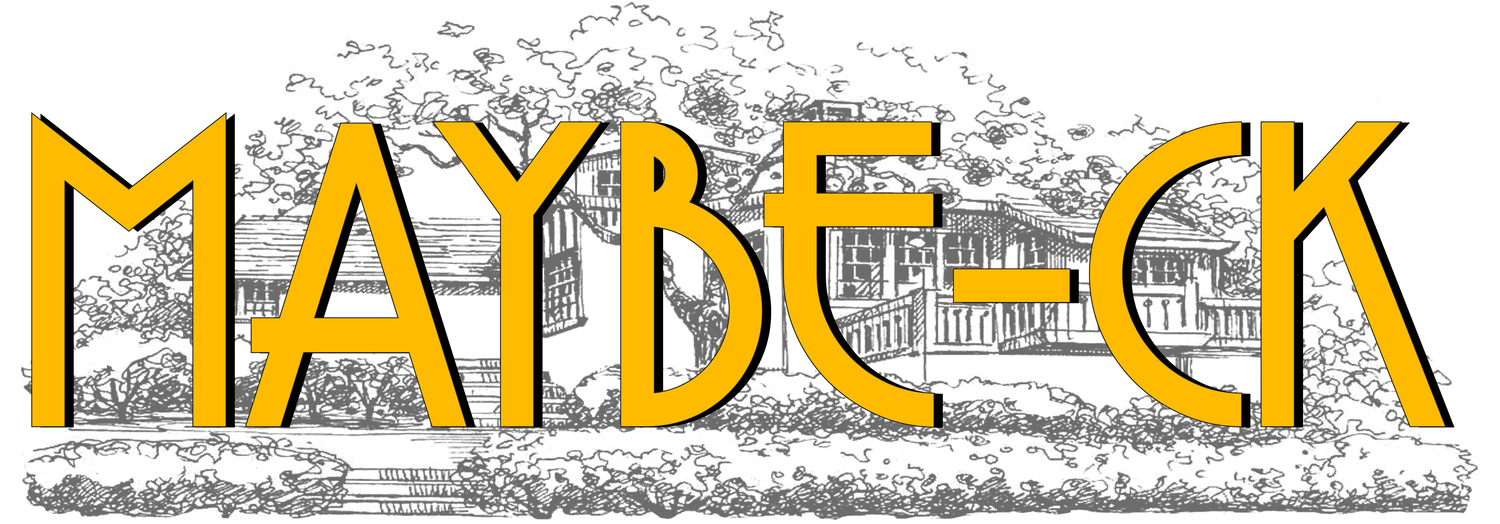Tile research
I'm writing today with some interesting information I've found about the tile in my house after doing a lot of research. I was told in the historic documents that came with the house that the bathroom tiles are Tunisian. After doing some research, it turns out the decorative floor tiles are from the famous Chemla tile company in Tunisia. I can tell they are genuine Chemla because the tiles have special scars in the glaze where they were held up by tripods during the firing process. Score one for the house! These tiles were imported mostly to New York around 1900 and Los Angeles area around the 1920s to go with the Spanish Colonial Moorish style that was popular at the time. Some famous art tile makers in California also copied some of the designs which is why I mentioned the scars in the glaze because that proves they are Chemla.
This bird has a different color face than the other bird tile
I was also inerested in the decorative wall tiles in the house as they are a bold "cuerda seca" style (dry line). A water resistant line is screened onto the tile, and the glaze is added with a squirt bottle. The water based glaze is resistant to the dry outline formed by an oil based substance. The result can be pronounced so that the glaze forms a rounded meniscus next to the cuerda seca outline, bringing the glaze into rounded relief from the body of the tile.
The Chemla tiles were notably used in New York, Los Angeles and a bit in Florida. Knowing the Tunisian tiles were used in LA, I thought I would research LA art tile companies who used the cuerda seca design in the late '20s. The bold design reminded me of Malibu Potteries tiles - a very popular company which only lasted from '26-32. I did find one Malibu Potteries 3x3" on the floor but the wall tiles are definitely not Malibu Potteries.
My lone Malibu Potteries tile - a 3x3" on the floor.
From the Malibu Potteries web archive
Back to the wall tile -
The wall tiles are a bit "off" so I think they were added above the floor tiles after the house was built.
After doing a lot of google image searches for various California art tile companies, I was having a very hard time finding out who made the cuerda seca wall tile. I had a feeling these were added in '39 when a bunch of other work was done to the house. That narrows down the field a bit as many of the California decorative tile companies died out around the depression. A few survived until WWII but after that there were almost no American decorative tile makers left as styles changed to more modernist and imported tiles took their place.
The wall tiles have a bright and bold Art Deco appearance that looked more like tile companies from the '30s such as Tudor Tile, Santa Monica Brick Co. and Gladding McBean. '39 seems about right as they are sort of a Deco Moderne look that is sort of a transitional style between Art Deco and Mid Century Modern. I wasn't really getting anywhere until I stumbled upon this image:
From Watsonville highschool - as seen in an artisticlicense article about Janet Starr'a tile work
These two designs had such striking similarities, I thought they must be by the same maker. I emailed the person who restored them and she had seen no markings on them so I was at a dead end. I started looking at California high school tile and found some Solon and Larkin, formerly Solon and Schemmel, that looked vaguely similar. After researching S&S and S&L, I came across a S&S tile in the Hearst "Castle" that looks somewhat similar -
From Flickr
The symmetrical S&S flower tiles with the swirls and dots reminded me of our double fleur de lis design.
Meanwhile I had been talking to Michael Padwee who blogs about tile and architecture in NY and is part of the Tile Heritage Foundation. He connected me with Riley Doty, another contributor to the THF who lives in Oakland and was able to check out the tile.
Riley Doty told me that the tile was probably not S&L but agreed that it was probably the same maker as the Watsonville High School tile. He said this maker was used by an architect called William H. Weeks who was a prodigious architect of California high schools and hotels.
He had some fragments of the mystery maker from a Martinez high school at home and told me he would check to see if they had markings. They did not.
It is currently an unsolved mystery who made my decorative wall tiles in the bathroom, kitchen and laundry room although Riley is sending out an email to THF to see if they can be identified by any members.
Much thanks to those who helped with information and identification of my bathroom tiles!
Michael Padwee of the Tiles in New York blog and the Tile Heritage Foundation:
http://tilesinnewyork.blogspot.com/2014/11/lost-tile-installations-tunisian-tiles.html?m=1
Riley Doty of Doty Tile and also a member of the THF:
http://artisticlicense.org/?p=411
Martie Juede of the Adamson House Malibu Potteries Archive:
Adamsonhouse.org
Watsonville High School tile mural restoration/recreation by Janet Starr:
http://artisticlicense.org/?p=427
Regarding Maybeck, it seems unlikely that he would have designed the tile to look like this. What is most likely is that someone added them to dress up Maybeck's style of minimalist kitchen and bath design. It's possible he could have suggested the floor tiles as he was working on the Earl C Anthony house in LA during the peak in popularity of Malibu and Chemla tiles.
Update: the window sill tiles are yet another tile company - American Encaustic Tile Company.
From American Art Tile by Norman Karlson














